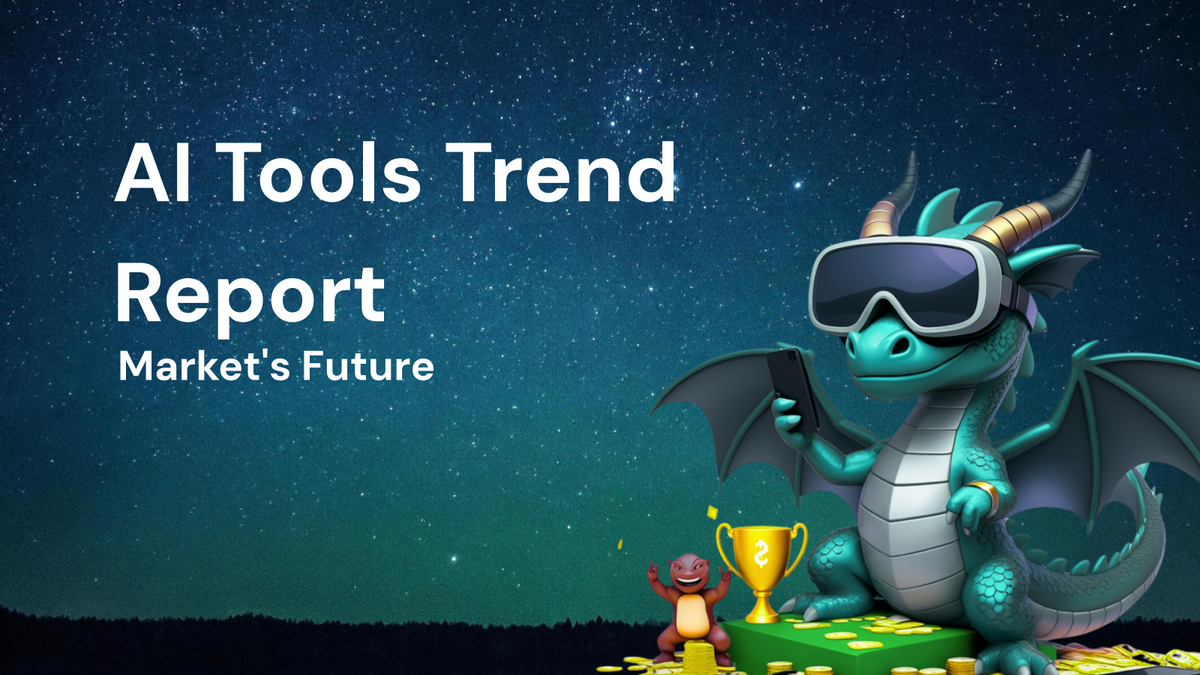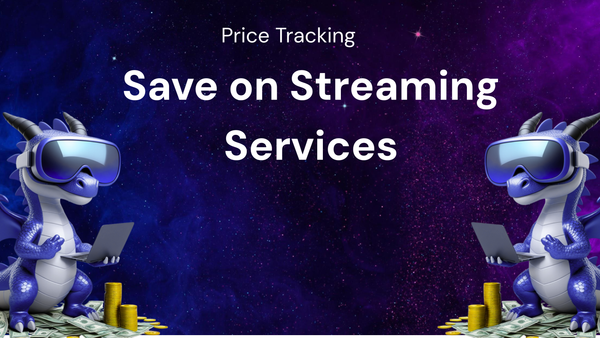AI Tools Trend Report: Forecasting the Market's Future

AI Tools Trend Report: Forecasting the Market's Future
Artificial intelligence (AI) has transitioned from a futuristic concept to a tangible force reshaping industries across the globe. Fueling this transformation is a burgeoning ecosystem of AI tools, designed to automate tasks, augment human capabilities, and unlock data-driven insights. Understanding the trends shaping this dynamic market is crucial for businesses seeking to leverage AI's potential, investors looking for opportunities, and individuals aiming to stay ahead in an increasingly AI-driven world. This report delves into the key trends influencing the AI tools market, providing a forecast for its future trajectory and highlighting potential challenges and opportunities.
I. Defining the AI Tools Landscape
Before diving into trends, it's crucial to define what constitutes an "AI tool." In broad terms, an AI tool is any software or platform that utilizes AI algorithms to perform specific tasks or provide AI-powered functionalities. This definition encompasses a vast spectrum of applications, including:
- Machine Learning Platforms: These platforms provide the infrastructure and tools for developing, training, deploying, and managing machine learning models. Examples include TensorFlow, PyTorch, scikit-learn, and cloud-based solutions like AWS SageMaker, Google Cloud AI Platform, and Azure Machine Learning.
- Natural Language Processing (NLP) Tools: NLP tools enable computers to understand, interpret, and generate human language. They include tools for text analysis, sentiment analysis, machine translation, chatbot development, and voice recognition. Examples include spaCy, NLTK, Hugging Face Transformers, and cloud-based NLP services.
- Computer Vision Tools: Computer vision tools allow computers to "see" and interpret images and videos. They are used for object detection, image classification, facial recognition, and video analysis. Examples include OpenCV, TensorFlow Object Detection API, and cloud-based vision APIs.
- Robotic Process Automation (RPA) Tools: RPA tools automate repetitive, rule-based tasks typically performed by humans. Increasingly, RPA is being enhanced with AI capabilities like intelligent document processing and machine learning to handle more complex processes. Examples include UiPath, Automation Anywhere, and Blue Prism.
- AI-Powered Analytics and Business Intelligence (BI) Tools: These tools leverage AI to automate data analysis, uncover hidden patterns, and generate actionable insights. They often include features like automated data discovery, predictive analytics, and natural language querying. Examples include Tableau, Power BI, and ThoughtSpot.
- AI-Enabled Cybersecurity Tools: These tools utilize AI to detect and prevent cyber threats, automate security tasks, and improve security incident response. They include tools for anomaly detection, threat intelligence, and vulnerability management. Examples include Darktrace, Cylance, and Vectra.
- AI-Driven Marketing and Sales Tools: These tools automate marketing tasks, personalize customer experiences, and improve sales effectiveness. They include tools for lead generation, customer segmentation, content creation, and sales forecasting. Examples include HubSpot, Salesforce Einstein, and Marketo.
This is not an exhaustive list, but it provides a representative overview of the diverse landscape of AI tools.
II. Key Trends Shaping the AI Tools Market
Several key trends are driving the growth and evolution of the AI tools market:
- Democratization of AI: Historically, AI development required specialized expertise and significant computing resources. However, the rise of cloud-based AI platforms, pre-trained models, and low-code/no-code AI tools is making AI more accessible to a wider range of users, including citizen data scientists and business users. This democratization is accelerating the adoption of AI across various industries.
- Rise of AutoML: Automated Machine Learning (AutoML) is a suite of techniques that automate the process of building and deploying machine learning models. AutoML platforms automatically handle tasks like data preprocessing, feature engineering, model selection, and hyperparameter tuning, significantly reducing the time and effort required to build effective AI models. This trend is particularly important for organizations with limited data science expertise.
- Edge AI: Edge AI involves deploying AI models on edge devices, such as smartphones, cameras, and industrial equipment, rather than relying solely on cloud-based processing. This enables faster response times, reduced latency, and improved privacy, making it ideal for applications like autonomous vehicles, real-time video analytics, and smart manufacturing. The increasing availability of specialized hardware for edge AI is fueling its growth.
- Generative AI Explosion: Generative AI, which encompasses models that can generate new content such as text, images, audio, and video, has exploded in popularity in recent years. Tools like GPT-3, DALL-E 2, and Stable Diffusion have demonstrated the potential of generative AI to revolutionize content creation, design, and other creative fields. This trend is driving demand for tools that enable businesses to leverage generative AI for various applications, from marketing and advertising to product development and customer service.
- Focus on AI Explainability and Trustworthiness: As AI systems become more complex and are deployed in critical applications, there is increasing concern about their transparency, fairness, and reliability. Tools for Explainable AI (XAI) are emerging to help users understand how AI models make decisions and identify potential biases. Furthermore, frameworks and tools for building trustworthy AI systems are gaining traction, focusing on aspects like data privacy, security, and ethical considerations.
- AI-Powered Cybersecurity Becoming Mainstream: With the increasing sophistication and frequency of cyberattacks, businesses are turning to AI-powered cybersecurity tools to enhance their defenses. These tools leverage AI to detect anomalies, identify threats, automate security tasks, and improve incident response. The demand for AI-driven security solutions is expected to grow significantly as organizations struggle to keep up with the evolving threat landscape.
- Integration of AI into Existing Software Platforms: Rather than being standalone solutions, AI is increasingly being integrated into existing software platforms across various domains, such as CRM, ERP, and marketing automation. This allows users to seamlessly leverage AI capabilities within their familiar workflows, without requiring them to adopt new and complex tools.
- AI-Driven Process Automation beyond RPA: While RPA has been successful in automating rule-based tasks, AI is taking process automation to the next level. AI-powered process automation tools can handle more complex, unstructured data and make intelligent decisions, enabling end-to-end automation of business processes. This trend is driving significant efficiency gains and cost savings for organizations.
- The Emergence of AI Engineering: AI Engineering is a discipline focused on the operationalization and scaling of AI models. It encompasses the entire AI lifecycle, from data collection and preprocessing to model deployment, monitoring, and maintenance. The growing importance of AI engineering reflects the need for robust and scalable AI infrastructure to support enterprise-wide AI initiatives.
- The Rise of Vertical-Specific AI Tools: While many AI tools are generic and can be applied across various industries, there is a growing trend towards the development of vertical-specific AI solutions that are tailored to the unique needs of specific industries, such as healthcare, finance, manufacturing, and retail. These solutions often incorporate domain-specific knowledge and data to deliver more accurate and relevant insights.
III. Market Forecast and Growth Projections
The AI tools market is experiencing rapid growth, driven by the factors outlined above. Various market research reports provide different estimates, but the overall consensus is that the market will continue to expand significantly in the coming years.
- Market Size: The global AI software market size was valued at around \$100 billion in 2022 and is projected to reach several hundred billion dollars by 2030.
- Growth Rate: The market is expected to grow at a compound annual growth rate (CAGR) of between 30% and 40% over the next five to ten years.
- Key Drivers: The key drivers of market growth include increasing adoption of AI across industries, rising demand for automation, growing availability of AI talent, and advancements in AI technology.
- Regional Trends: North America currently dominates the AI tools market, but Asia-Pacific is expected to be the fastest-growing region due to increasing investments in AI research and development in countries like China and India.
IV. Challenges and Opportunities
While the AI tools market offers significant opportunities, it also faces several challenges:
Challenges:
- Data Quality and Availability: AI models require large amounts of high-quality data to train effectively. Many organizations struggle to collect, clean, and prepare data for AI applications.
- Lack of AI Talent: The shortage of skilled AI professionals, including data scientists, machine learning engineers, and AI architects, is a major barrier to AI adoption.
- Integration Complexity: Integrating AI tools into existing IT infrastructure and business processes can be complex and time-consuming.
- Ethical Concerns: AI systems can perpetuate biases and raise ethical concerns related to privacy, fairness, and accountability.
- Security Risks: AI systems are vulnerable to adversarial attacks and data breaches, requiring robust security measures.
- Regulatory Uncertainty: The lack of clear regulations surrounding AI development and deployment creates uncertainty for businesses.
Opportunities:
- Automation of Repetitive Tasks: AI tools can automate repetitive tasks across various industries, freeing up human workers to focus on more strategic and creative activities.
- Improved Decision-Making: AI can analyze large datasets to identify patterns and insights that can improve decision-making in areas like marketing, finance, and operations.
- Personalized Customer Experiences: AI tools can personalize customer interactions, leading to increased customer satisfaction and loyalty.
- Enhanced Productivity: AI can enhance productivity by automating tasks, optimizing processes, and providing real-time insights.
- New Product and Service Development: AI can be used to develop new products and services that meet the evolving needs of customers.
- Cost Reduction: AI can help organizations reduce costs by automating tasks, optimizing resource allocation, and preventing errors.
- Improved Healthcare Outcomes: AI can be used to improve healthcare outcomes by diagnosing diseases earlier, personalizing treatment plans, and accelerating drug discovery.
V. Implications for Businesses, Investors, and Individuals
The AI tools market has significant implications for various stakeholders:
- Businesses: Businesses need to develop a clear AI strategy, identify use cases where AI can deliver value, and invest in the necessary infrastructure and talent. They also need to address ethical concerns and ensure that AI systems are used responsibly. Businesses should focus on integrating AI into their existing workflows and leveraging low-code/no-code AI tools to empower business users.
- Investors: The AI tools market offers significant investment opportunities. Investors should focus on companies that are developing innovative AI tools, addressing key market challenges, and have a strong track record of execution. Areas like generative AI, edge AI, and AI-powered cybersecurity are particularly promising.
- Individuals: Individuals need to acquire the skills and knowledge necessary to thrive in an AI-driven world. This includes learning about AI concepts, developing data literacy, and exploring career opportunities in AI-related fields. Staying informed about the latest trends in AI tools is crucial for career advancement and personal development.
VI. Conclusion
The AI tools market is poised for continued growth and innovation in the coming years. The trends outlined in this report, including the democratization of AI, the rise of AutoML, the explosion of generative AI, and the focus on AI explainability, are shaping the future of AI and creating new opportunities for businesses, investors, and individuals. While challenges remain, the potential benefits of AI are undeniable. By understanding these trends and proactively addressing the challenges, organizations can leverage AI tools to drive innovation, improve efficiency, and gain a competitive advantage in an increasingly AI-driven world. The key is to adopt a strategic approach to AI, focusing on identifying the right use cases, building the necessary capabilities, and ensuring responsible and ethical AI deployment. The future of work and business is inextricably linked to AI, and those who embrace and adapt to this technological revolution will be best positioned for success.




